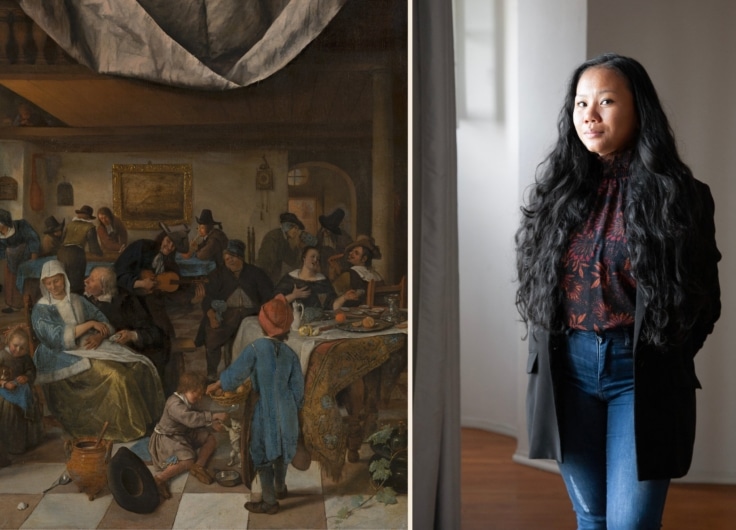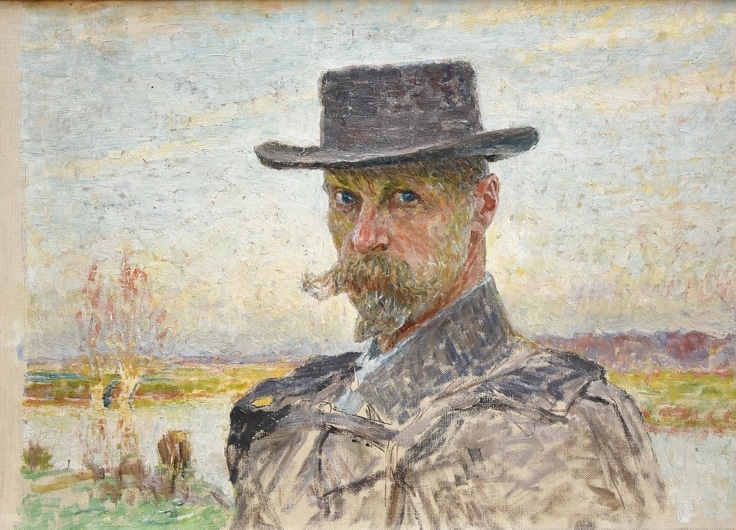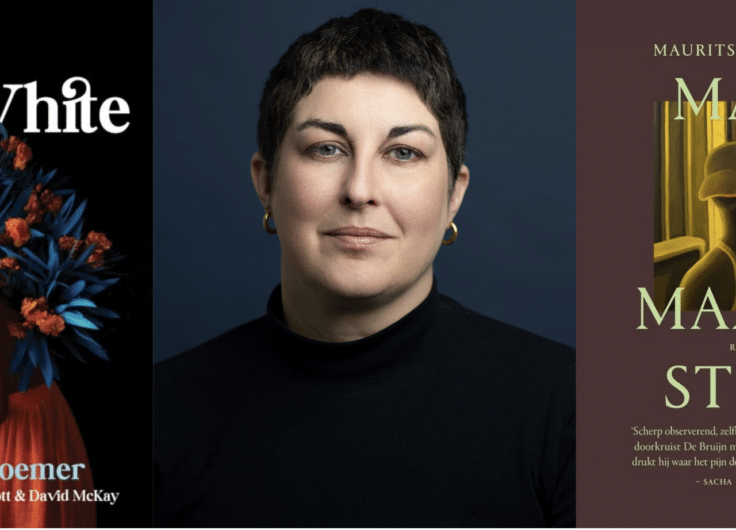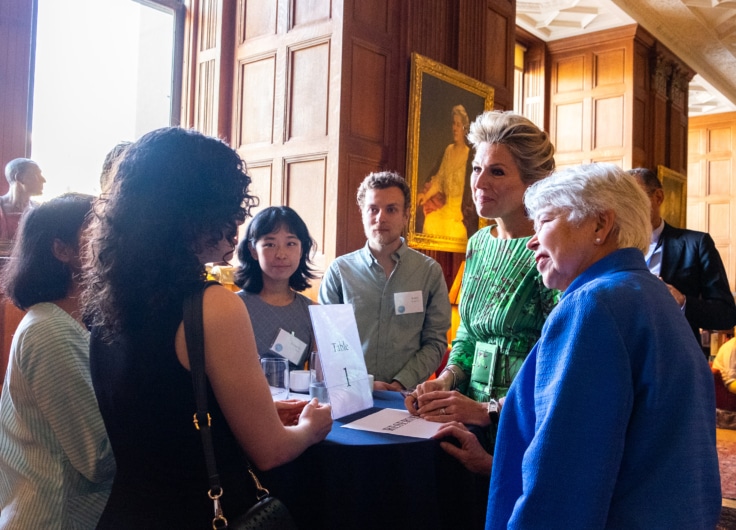Privateers Show How the Dutch Used to Write
How did the common man write in the seventeenth and eighteenth-century Dutch Republic? Historical linguists can investigate the question in the electronic corpus Brieven als Buit (Letters as Loot) – thanks to English privateers.
The Republic of the Seven United Netherlands fought not only against the water but also on it. Four times during the seventeenth and eighteenth centuries the Republic found itself in armed conflict with England. The issue in these Anglo-Dutch wars was control of the sea and trade routes. They involved naval battles between powerful warships, but there was also a less violent and equally effective way of hurting the enemy: privateering. Were privateers the same as pirates? No, the latter were freebooters who operated outside the law, while privateers, with a so-called letter of marque, had the permission of the government to capture enemy ships.
 The Dutch burning English ships during the Raid on the Medway, 20 June 1667, painting by Jan van Leyden, circa 1667-1669
The Dutch burning English ships during the Raid on the Medway, 20 June 1667, painting by Jan van Leyden, circa 1667-1669© Rijksmuseum
In England, after a privateer had captured a hostile ship, the High Court of Admiralty determined whether this had taken place according to the rules. It based itself on the statements of the privateers and the interrogation of passengers on the ship in question. In addition, the judges were guided in their decision by documents found on board: official documents such as ship’s papers and bills of lading but also personal papers belonging to the crew, and letters.
All such documents were carefully archived. At the end of the 1970s in the National Archives in Kew, the Dutch historian S. Braunius chanced upon these long-forgotten confiscated papers from thousands of captured Dutch ships. In 2005 the historian Roelof van Gelder made a preliminary inventory on the initiative of the Royal Library in The Hague. He estimated the number of captured letters from Dutch ships at 38,000. These consisted of letters consigned on board ship in order to maintain contact with family members, friends and business relations abroad, but also of letters from seafarers and Dutch nationals abroad which were sent from far and wide to the Republic.
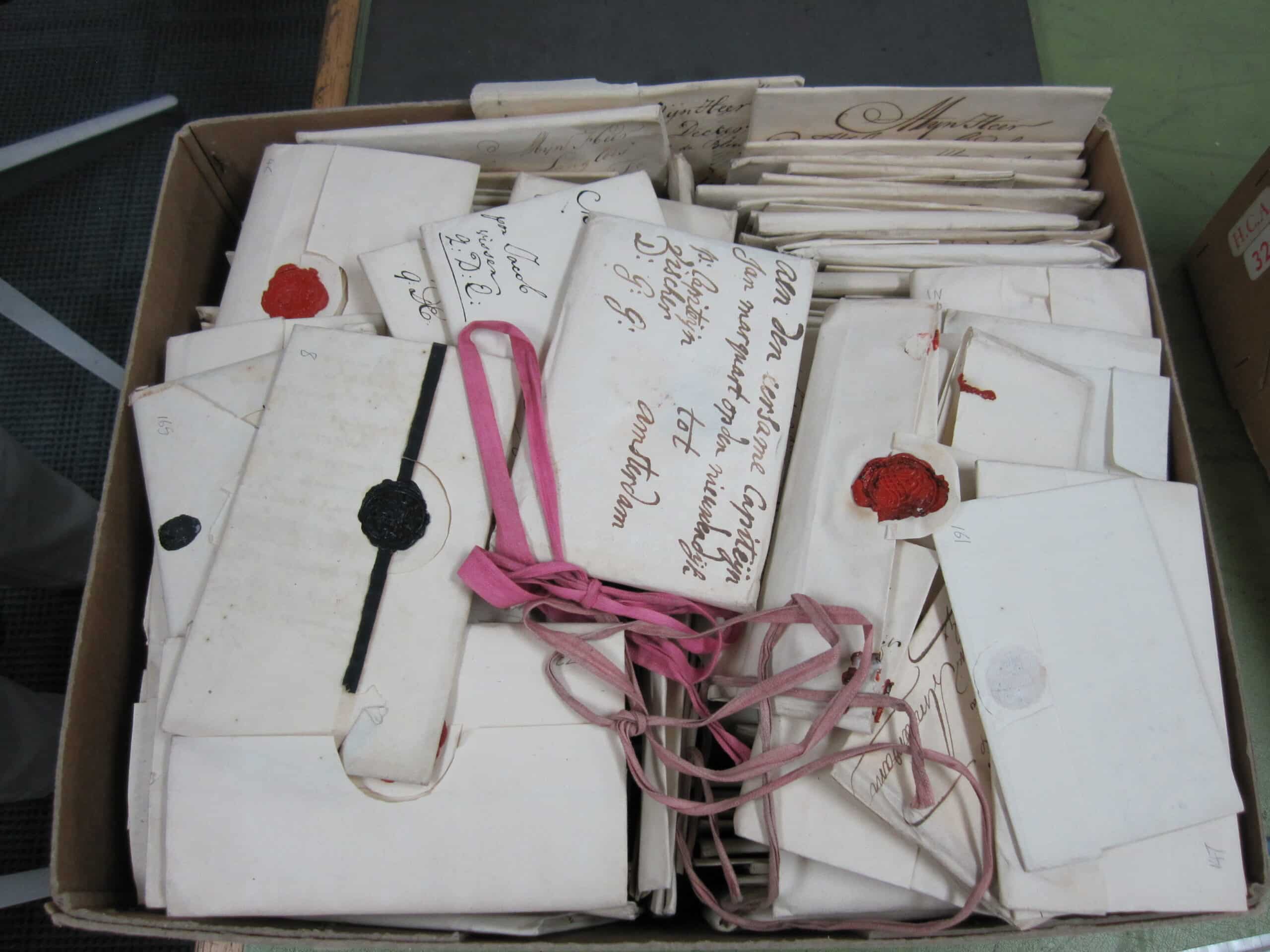 Letters captured by the English from the Dutch in the seventeenth century
Letters captured by the English from the Dutch in the seventeenth century© Institute for Dutch Lexicology
Sixty percent of those letters comprised business correspondence, forty percent was mainly personal in nature. Of the personal letters, approximately eight thousand originated from “ordinary” people. It was this latter group of letters in particular that aroused the interest of linguists, since this material offered a unique opportunity to form a picture of the authentic language usage of the lower and middle classes in the Republic. This language was probably closer to contemporary oral usage than, for example, literary texts of the period. Ordinary people did not write learned treatises, plays or poetry like the erudite literary elite of society. Up to now not so much was known about their language usage.
Making letters accessible
It will be clear that researchers could not wait to study these Dutch-language letters and other documents, but before they could begin, much water would have to flow under the bridge. Deciphering the often barely legible letters was consequently a necessary first step.
In the research programme, Brieven als Buiten (Letters as Loot) headed by Marijke van der Wal, a search was conducted in the hundreds of well-archived but poorly indexed letters from two different periods. These were the years 1664-1674 (from shortly before the Second Anglo-Dutch War up to and including the end of the Third Anglo-Dutch War) and the period 1776-1784 (with the Fourth Anglo-Dutch War and the American War of Independence).
Volunteers copied the text of the letters, including spelling mistakes and slips of the pen
In the first period, there was great linguistic diversity, but there was a tendency and a wish to homogenise Dutch, while the second period was characterised according to the traditional model by a considerable degree of linguistic uniformity. Would the letters support that view?
The National Archives in Kew gave the researchers in the project the opportunity to photograph the letters of their choice. Subsequently, scores of volunteers with infinite patience and great accuracy made so-called diplomatic transcriptions. That means that they typed the text of the original, including spelling mistakes and slips of the pen.
The transcriptions were included in an electronic corpus: a collection of – in this case, written – texts designed for the study of a language or language usage. Reliable transcriptions are indispensable but relying solely on them for pursuing systematic research into and making statements about linguistic usage is still not really feasible. For this reason, a logical following step is to link extra information about these letters to them. Those facts are called metadata. The more refined that information is, the more interesting and reliable the research will be.
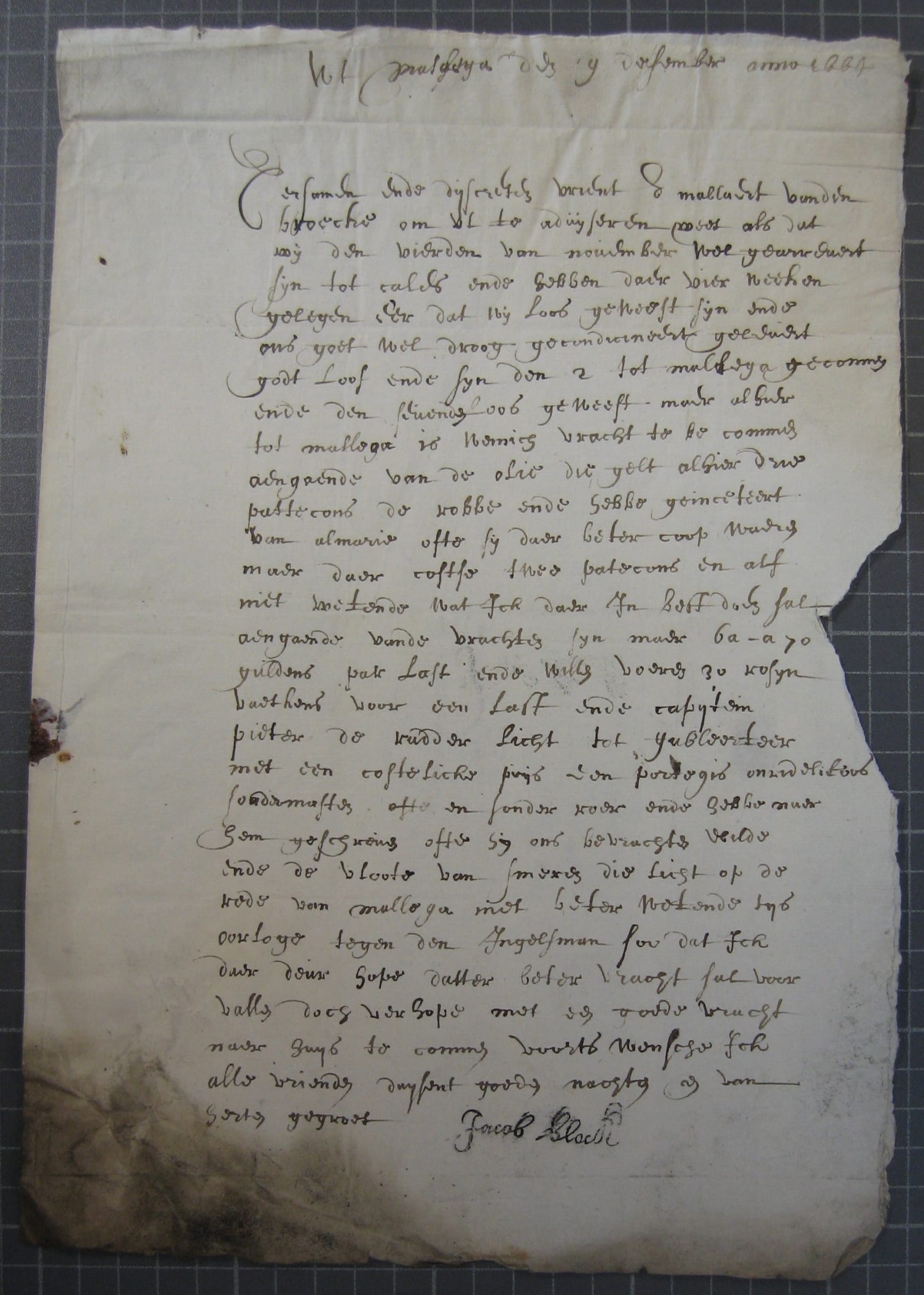
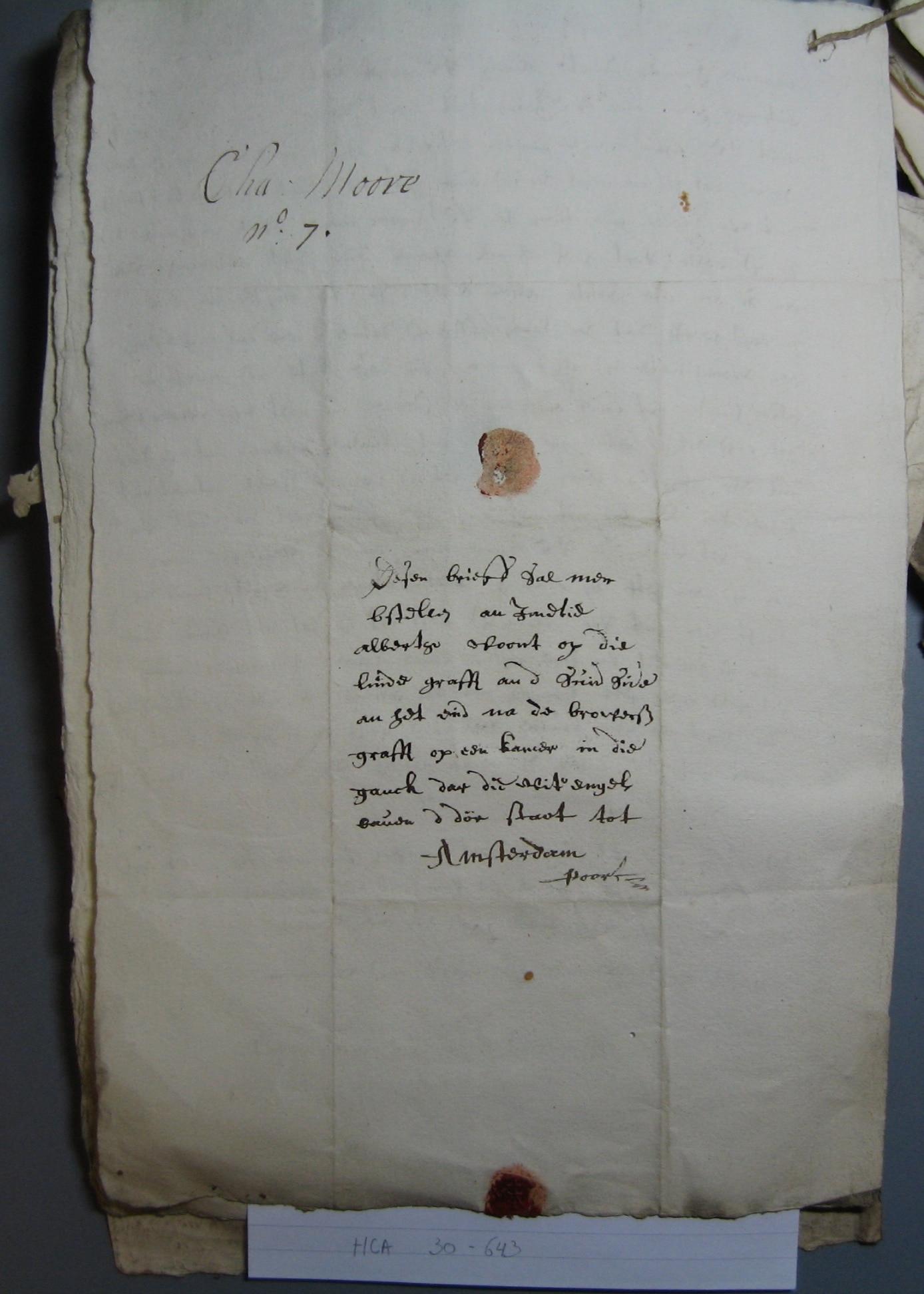
© Dutch Language Institute
Metadata
In the corpus Letters as Loot all 1033 letters are accompanied by extensive metadata on the sender, the addressee, the place from which a letter was sent and on the letter itself. Not only the name of the sender is given, but also the gender, the social class to which he or she belonged, their age (approximate), the place where a speaker grew up or spent most of his or her life, and the relation to the addressee (employer, friend, grandchild, mother, nephew). The name of the addressee is given and also the place of residence, country, region, or ship to which a letter was sent. Information given with each letter itself included year, type of text (business or private), shelf-mark (the location of a letter in The National Archives) and – not unimportantly – whether the letter had been written by the sender themselves or by someone else who was literate.
These metadata are handy for pinpointing, for example, letters written by women from Zuid-Holland in the year 1664. But to be able to search effectively in the content of the letter a few more steps are necessary. In this the Institute for Dutch Lexicology – now the Dutch Language Institute – played an important part: they enriched the letters linguistically. What does that mean precisely?
Linguistic enrichment
Each word in a letter has had a modern standard form or lemma assigned to it. Linguists call that lemmatisation. Its importance can best be demonstrated by using an example. The Netherlands has only had an official, government-approved spelling since 1804. In the preceding centuries, various spelling variations of a word could occur. The word kapitein (captain), for example, is spelt in over a hundred different ways in the letters: capytein, caepetijn, kappetijn, kapten, kappetaein, cappeten, kapeteijn and so on and so forth. Because all these spellings are linked to kapitein, searching with that lemma produces all the spelling variations at once.
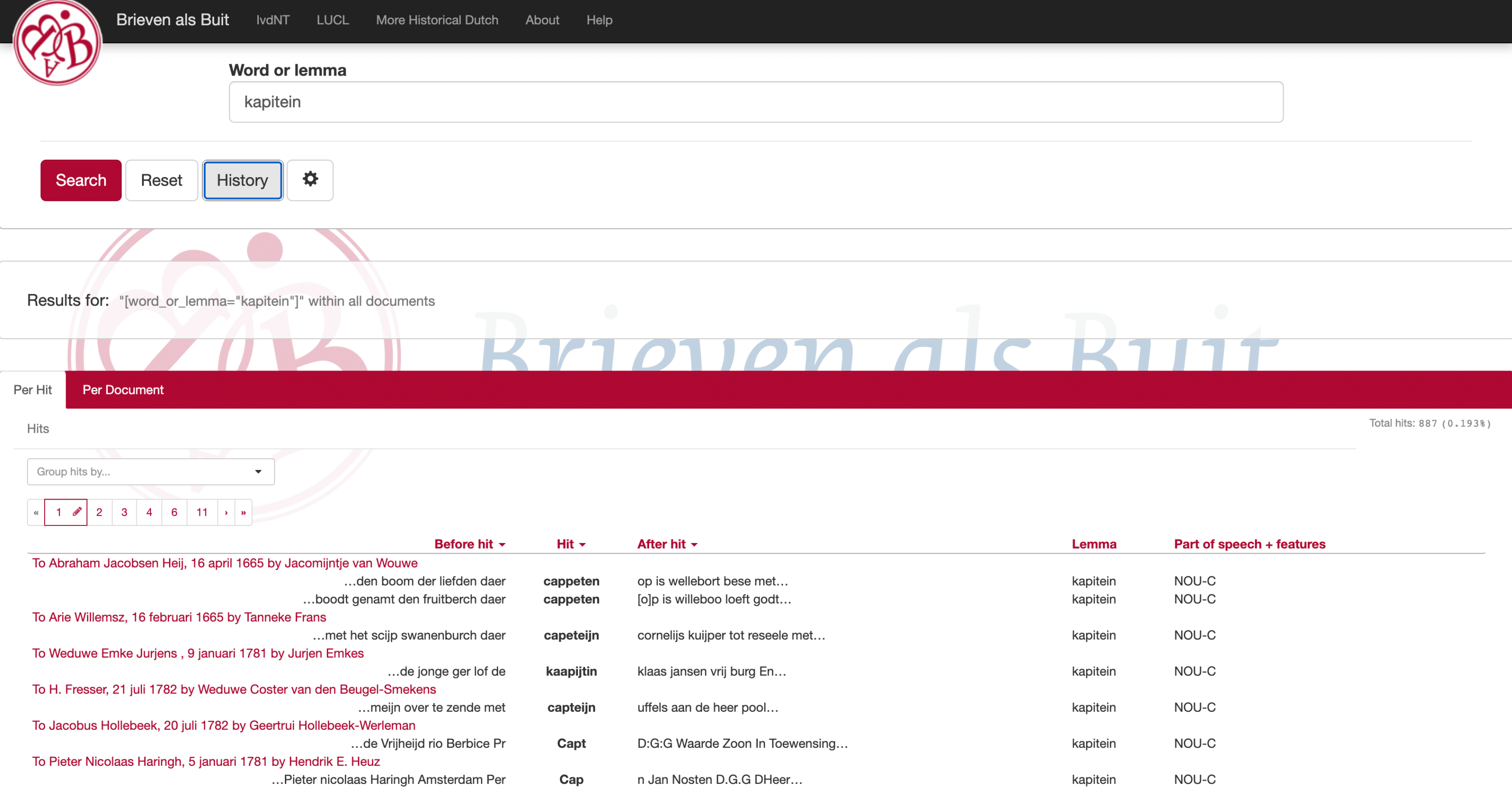 The word kapitein (captain) is spelt in over a hundred different ways in the letters.
The word kapitein (captain) is spelt in over a hundred different ways in the letters.© screenshot website Brieven als Buit
Another important aspect of linguistic enrichment consists in assigning the correct word class to a word form. In Letters as Loot that was done in two stages. In the first round, a computer programme automatically assigned a word class. All those assignments were subsequently checked by hand and where necessary corrected. In this way, it becomes possible to search for combinations of, for example, adjectives and nouns: beminde frindine (beloved friend), cleijn lettertje (small letter).
Autographs
Unlike historians, (historical) linguists are not so much interested in the content of the letters – their principal aim is not to get to know more about the daily course of events on board, in distant lands or in the Republic – but mainly in the form, in the way in which thoughts, feelings and tribulations have been put into words.
In order to make reliable statements about the language use in letters it is important to establish who has written a letter. Most people of humble origins could not read or write. If they wanted to compose a letter, they called in the help of people who could. In this kind of case, it is difficult to determine whether linguistic peculiarities should be attributed to the sender or the letter-writer.
Most people of humble origins could not read or write
For this reason, linguists are mainly interested in autographs, that is, texts written by the sender themselves. How can you decide whether a letter is an autograph or not? That can only be done by comparing a large number of texts. If various hands occur with a single sender, that sender will probably not have written the letters themselves. You can draw the same conclusion with the same handwriting and different senders.
More problematic are the cases where there is a question of unique senders and unique handwriting. In order to determine which handwriting can be linked to which sender, church and legal documents such as marriage licences and wills are combed through. Often signatures can be found in these which can be compared with the handwriting in the letters.
The importance of the letters
The first exploratory investigation of the language of these letters has already produced a number of interesting results. In her doctoral thesis, the Leiden researcher Judith Nobels examined several linguistic phenomena in the seventeenth-century epistolary material – such as forms of address, negation and diminutive endings. She discovered, for example, that the rarely used form of address jij (you) was mainly used by parents from the lower social classes for their children. And the use of the diminutive ending –je is mainly found with men from the lower classes; men with higher education cling to the old diminutive form –ke.
The written language in the late eighteenth century showed much more variety than previous research into language led one to believe
In her thesis, Tanja Simons concentrated on eighteenth-century epistolatory material. An important result of her research was that the written language in the late eighteenth century showed much more variety than previous research into language led one to believe. A remarkable similarity between the two research projects was that differences in usage were mainly attributable to the gender of the letter-writer and to social factors.
In fact, we should be grateful to the English privateers for having confiscated all documents on board and to the English High Court of Admiralty for having carefully stored those documents. If the letters had reached their destination, they would definitely not have withstood the ravages of time. Now we can read with a slight sense of shame these letters that are not really
Intended for our eyes. Historians, genealogists and linguists will discover much more interest in them.
Further reading
· General information on captured letters can be found on the nationaalarchief.nl and gekaaptebrieven.nl websites
· Specific information on the research programme Letters as Loot (Brieven als Buit) and the publications issuing from it is on the website of the University of Leiden
· Anyone wanting to carry out research themselves into these captured letters, would do best to start on the website of the Instituut voor de Nederlandse Taal (Dutch Language Institute) and look under Brieven als Buit


